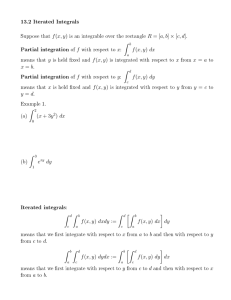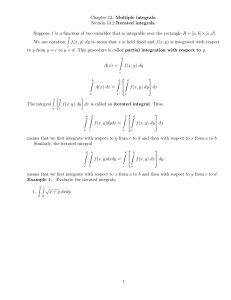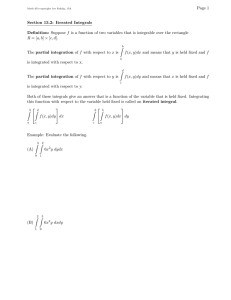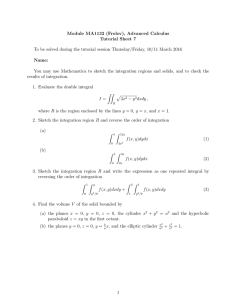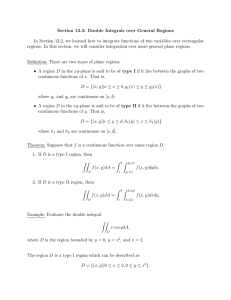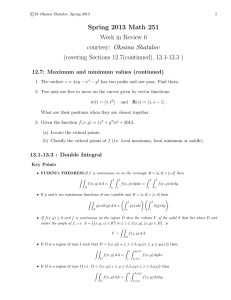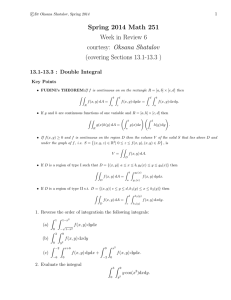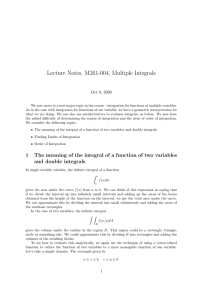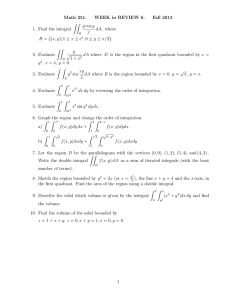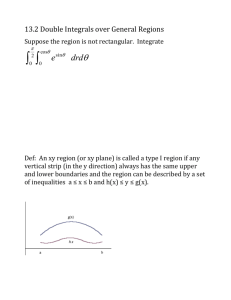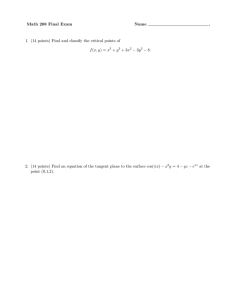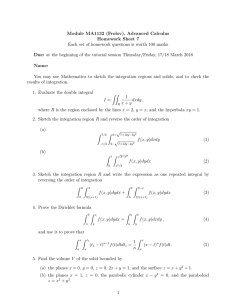Section 13.2: Iterated Integrals
advertisement
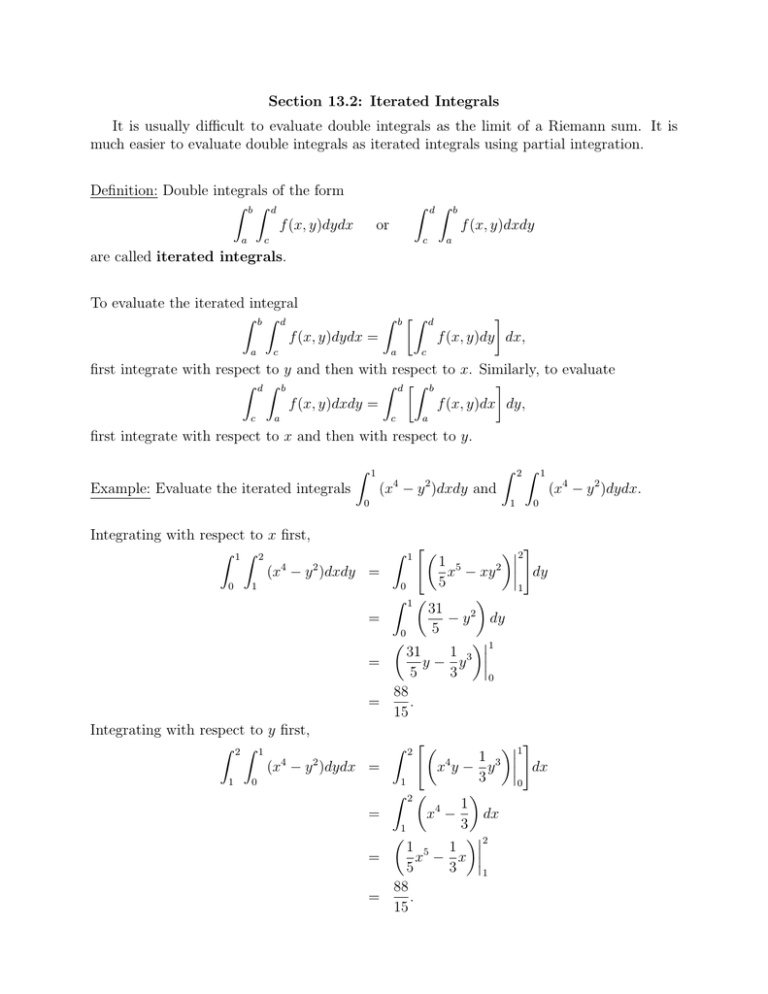
Section 13.2: Iterated Integrals It is usually difficult to evaluate double integrals as the limit of a Riemann sum. It is much easier to evaluate double integrals as iterated integrals using partial integration. Definition: Double integrals of the form Z bZ d f (x, y)dydx a d Z Z or b f (x, y)dxdy c c a are called iterated integrals. To evaluate the iterated integral Z bZ d Z b Z f (x, y)dydx = a c d f (x, y)dy dx, c a first integrate with respect to y and then with respect to x. Similarly, to evaluate Z dZ b Z d Z b f (x, y)dxdy = f (x, y)dx dy, c a c a first integrate with respect to x and then with respect to y. 1 Z 4 2 0 Integrating with respect to x first, Z 1Z 2 Z 4 2 (x − y )dxdy = 1 0 Z 1 1 0 " 2 # 1 5 x − xy 2 dy 5 0 1 Z 1 31 − y 2 dy = 5 0 1 31 1 3 y− y = 5 3 0 88 = . 15 Integrating with respect to y first, Z 2Z 1 Z 4 2 (x − y )dydx = 1 2 (x − y )dxdy and Example: Evaluate the iterated integrals 0 Z 1 1 # 1 x4 y − y 3 dx 3 1 0 Z 2 1 = x4 − dx 3 1 2 1 5 1 = x − x 5 3 1 88 = . 15 2 " (x4 − y 2 )dydx. Theorem: (Fubini’s Theorem) If f is continuous on the rectangle R = [a, b] × [c, d], then ZZ Z bZ d Z dZ b f (x, y)dA = f (x, y)dydx = f (x, y)dxdy. R a c c ZZ a xexy dA, where R = [0, 1] × [0, 1]. Example: Evaluate the double integral By Fubini’s Theorem, integrating first with respect to x gives ZZ Z 1Z 1 xy xexy dxdy = e − 2. xe dA = 0 R 0 By Fubini’s Theorem, integrating first with respect to y gives Z 1Z 1 ZZ xy xexy dydx xe dA = 0 0 R Z 1 = exy |10 dx Z0 1 (ex − 1)dx = 0 = (ex − x)|10 = e − 2. It is best to choose the order of integration that yields a simple integral. Example: Find the volume of the solid S lying under the plane z = 2x + 4y + 2 and above the rectangle R = [0, 1] × [1, 4]. By Fubini’s Theorem, ZZ V = (2x + 4y + 2)dA Z R 4Z 1 = (2x + 4y + 2)dxdy 1 Z 0 4 = Z1 4 = h 1 i x2 + 4xy + 2x 0 dy (4y + 3)dy 4 = 2y 2 + 3y 1 = 39. 1
